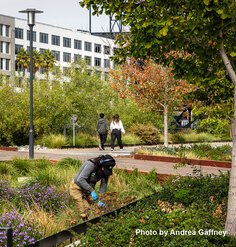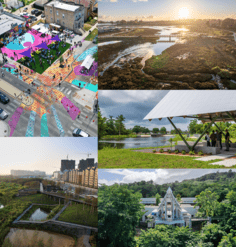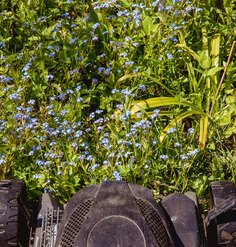From the Field: Setting the Place for the Future Workforce
By Cameron Rodman, MLA Candidate, University of Tennessee
For generations, designers, sociologists, economists, and geographers have sought to understand the importance and peculiarities of social spaces. Well-known studies have attempted to quantify and qualify the use of space, including William H. Whyte’s seminal The social life of small urban spaces. Previous findings and assumptions are now being challenged by the transition from a workplace saturated with Baby Boomers and replaced with Millennials and Gen X’ers. It is estimated that Baby Boomers will be replaced by Millennials by the year 2020 (Sullivan & Horwitz-Bennett, 2014).
With this in mind, designers are required to pay particularly close attention to the ways in which they design social spaces. The design of urban plazas, public and private parks, the workplace, and shared spaces all require a sociological paradigm reset. Marked differences exist in the way younger generations interact, are motivated to work, increase their productivity, and socialize.
This summer, our Case Study Investigation (CSI) research team is studying 1315 Peachtree Street, the Atlanta office of design firm Perkins + Will. The project includes two outdoor spaces — the ground-level terrace and fifth level terrace — which function as completely different social spaces and are used in a variety of ways.
The ground floor plaza is the primary entrance for all three of the building’s tenants: Perkins + Will, the Museum of Design Atlanta (MODA), and the Atlanta-Fulton Public Library. Since the building’s re-opening in 2011, the plaza has hosted numerous public and civic events, many of them organized by MODA. Other Midtown events, such as runs and festivals, often spill over into the plaza.
The fifth level terrace is a completely different animal. It has become a “third place,” a concept defined by Ray Oldenburg as an informal meeting place that facilitates and fosters broader, more creative interaction. It is a space where employees can interact and at the same time exist in privacy. The terrace contains many attributes that are believed to contribute to successful shared social spaces, including moveable furniture, variety of layout, views to landscape, and cleanliness (Sullivan & Horwitz-Bennett, 2014 & LaBarre, 2011).
Our CSI teams hopes to gain further insight about the fifth-level terrace and its impact on tenants. For now we can say that this open, well-lit setting allows for collaboration, time away from the desk to work, cross-fertilization of ideas, privacy, and social engagement — all of which are important for ensuring employee satisfaction, increased productivity, and value.
For further reading:
- LaBarre, S. (October 12, 2011). 3 Keys to Creating Great “Good Places”.
- Sullivan, C. C., & Horwitz-Bennett, B. (May 2014). Workplace design trends: Make way for the millennials!
- Whyte, W. H. (1980). The social life of small urban spaces. Washington, D.C.: The Conservation Foundation
Research Fellow Brad Collett and student Research Assistants Cameron Rodman, Angelike Angelopoulos, Jessica Taylor Neary, and Luis Diego Venegas Brenes are participating in LAF’s 2014 Case Study Investigation (CSI) program and working to document the performance of three exemplary landscape projects in Atlanta and Chattanooga. Any opinions expressed in this article belong solely to the author. Their inclusion in this article does not reflect endorsement by LAF.











